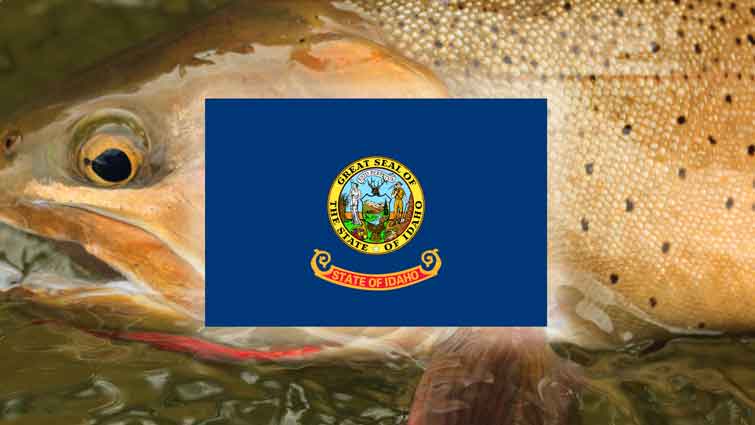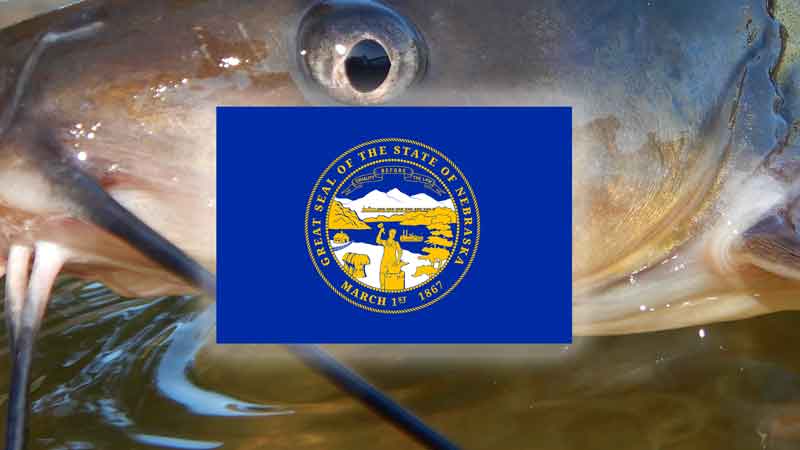Nothing in the fishing world matches the rush of watching a largemouth bass leap from the water to seize your lure. Welcome to topwater bass fishing, an angling technique that takes you to a new level of excitement, thrill, and the promise of making a substantial catch.
This article explores the strategies, fly selection, and other vital elements necessary for effective topwater bass fishing. Strap yourself in as we delve into the nitty-gritty of this dynamic form of fishing, where surface skirmishes, dramatic strikes, and the cunning skill of enticing these ferocious underwater predators become the order of the day.

Understanding Topwater Bass Fishing
Topwater bass fishing is a fishing technique where anglers cast lures or flies that float or move on the water's surface, thus stimulating bass to strike aggressively from below. This fishing method's appeal lies in its sheer exhilaration, owing to the visual feedback provided when a bass hits the lure or fly.
Bass is enticed to topwater presentations due to their predatory instinct to prey on creatures injured or trapped on the water's surface. The bass's feeding habits include a wide range of creatures. Whether it's a distressed minnow, a scampering frog, or an unfortunate insect, bass finds the possibility of an effortless meal too irresistible to pass up.
Various topwater lures and flies are available to mimic the behavior of the bass's natural prey. Some popular types include poppers, chuggers, stick baits, prop baits, and frog imitations. All these aim to emulate the erratic movements of an injured or cornered creature on the water surface, luring bass to strike.

Seasonal Considerations
The success and enjoyment of topwater bass fishing can be significantly influenced by the changing seasons. As the year progresses, water temperatures fluctuate, food sources come and go, and bass alter their behaviors and feeding patterns accordingly.
Understanding these seasonal changes and how they affect bass activity can help you tailor your approach to topwater fishing, ultimately increasing your catch rates.
From late spring to early fall, the warmer months are generally the most productive for topwater bass fishing. As water temperatures rise, bass become more active and spend more time feeding near the surface. This increased surface activity makes them prime targets for topwater lures and flies.
During spring, bass prepares for spawning as water temperatures warm up and daylight hours increase. They move from the deeper wintering holes to shallow spawning grounds, making them more accessible to topwater lures.

Post-spawn, bass are often ravenous and willing to strike at a well-placed topwater fly, making late spring one of the best times to engage in topwater tactics.
With its long, warm days, summer offers excellent opportunities for early morning and late evening topwater action. These are the times when the bass is most actively hunting for food on the surface, eager to capitalize on the abundance of summer prey like frogs, insects, and small fish.
Don't forget to take advantage of the summer phenomenon known as the 'mayfly hatch.' When these insects swarm over the water's surface, bass often engages in a feeding frenzy that can provide some heart-stopping topwater action. I recommend a good assortment of attractors, hoopers and larger mayfly patterns that can be floated on the surface for these occasions.
As water temperatures begin to drop in the fall, bass feed aggressively to stock up energy reserves for the cold winter months ahead. The drop in water temperature also triggers the migration of baitfish, leading to predatory feeding by bass, particularly at the surface. This season, often characterized by explosive strikes, can be one of the most exciting times for topwater bass fishing.
Winter, on the other hand, presents more of a challenge for topwater fishing. As water temperatures plummet, bass become less active and move to deeper water to conserve energy.
This change in behavior makes topwater fishing less effective. However, don't completely discount it; on warmer winter days, bass may venture into shallower water to feed, providing some potential for topwater action.

Location and Habitat
Selecting the right fishing location is integral to successful topwater bass fishing. Not all fishing spots are created equal, and understanding the subtleties of bass habitat is crucial for maximizing your chances of success.
Bass, being ambush predators, show a marked preference for areas with ample cover. This could be submerged vegetation, overhanging tree branches, docks, lily pads, or natural and artificial structures under the water.
These places are perfect hiding spots where bass can lurk unseen, waiting to launch themselves with startling speed at unsuspecting prey that ventures too close to the surface. You can often coax a bass into an explosive surface strike by strategically placing your topwater lure or fly near these areas.

Bass habitats range from sprawling lakes and winding rivers to smaller ponds and tranquil creeks. Each of these environments presents unique opportunities and challenges for topwater bass fishing.
In larger bodies of water like lakes and rivers, bass congregate around structures, weed lines, and drop-offs, where they can easily ambush their prey. Identifying and understanding the bass movement around these spots can significantly increase your success rate.
For example, during the warm summer months, bass in lakes often seek deeper, cooler waters during the day but move into the shallows to feed in the cooler hours of dawn and dusk. These are perfect times to target them with topwater presentations.
Smaller water bodies like ponds and creeks may offer different depths and diversity of structure, but they often hold surprisingly large bass. In these environments, bass can usually be found patrolling the shallows in search of food, especially during the warmer months.
Look for signs of feeding bass, such as surface disturbances or baitfish jumping, and aim your topwater presentations at these areas. Even the smallest creek or pond can become a hotbed of topwater action if you understand how to read the water and present your lures effectively.
Another aspect to consider is the clarity and color of the water. In clear waters, bass can be more skittish and cautious, making a stealthy approach and naturalistic lure presentation critical.
On the other hand, bass relies more on their sense of hearing and lateral line to detect prey in murky or stained waters, making noisy and vibrant lures like poppers and prop baits more effective.
Essential Gear for Topwater Bass Fishing
To ensure effective topwater fishing, you must equip yourself with the right gear, which includes a balanced combination of rod, reel, and line.
A 7 to 8-foot medium to heavy-action rod coupled with a sturdy reel capable of handling the aggressive strikes of bass is a potent setup.
The braided line is preferred due to its superior strength and minimal stretch, allowing you to effectively handle big bass and minimizing the chance of break-offs near structures.
Choosing the right leader and tippet is equally critical. Opt for abrasion-resistant materials because the topwater action often happens around structures and underwater obstacles that could easily fray or break your line. We like 2x Fluorocarbon for its abrasion resistance.

Topwater Fly Selection
Understanding the variety of topwater flies and their appropriate usage is crucial for successful topwater bass fishing. From loud and flashy poppers to subtle and naturalistic sliders, the key to fly selection lies in matching the fly's size, shape, and behavior to the prevailing conditions and the observed behavior of the bass.
Effective topwater flies mimic a bass's natural prey's size, shape, color, and behavior. The water disturbance caused by the fly is also critical, as it can pique the bass's curiosity and draw them from a distance.
Fishing Techniques and Strategies
Each topwater fly or lure has a unique and effective retrieval technique. Poppers create noise and splash with a sharp tug, imitating the struggles of an injured creature. Sliders move more smoothly across the water surface, mimicking a swimming frog or a mouse.
Divers sink momentarily beneath the surface, imitating a wounded baitfish or a diving frog before resurfacing.
Stealth and presentation are paramount when fishing topwater flies. Cast beyond your target and retrieve the fly into the strike zone, ensuring a natural and irresistible presentation to the lurking bass. Vary the speed and rhythm of your retrieve until you find what works best.

Handling and Releasing Bass
While topwater bass fishing is an exhilarating pursuit, handling the caught bass with care and prioritizing their well-being is essential. Protecting the waters where we wish is crucial, which is why you should practice catch and release. It helps maintain healthy bass populations for future generations of anglers, helping to conserve our planet.
When handling bass, wet your hands before touching them to minimize removing their protective slime coat, which can lead to infections. Avoid squeezing the fish too tightly, and use barbless hooks to make hook removal easier and less harmful to the bass.
After capturing that thrilling moment with a photo, quickly release the bass into the water. Allow it to swim away strongly to ensure its survival.
Final Thoughts
The road to mastering topwater bass fishing is as exciting as rewarding. You can unlock a new level of fishing excitement by gaining a deeper understanding of bass behavior, selecting the right gear and flies, and employing effective strategies and techniques.
Remember, every cast presents a new opportunity for a thrilling encounter with one of nature's most formidable freshwater predators, the bass. With this newfound knowledge, experience the exciting world of topwater bass fishing.
Contributed by:
Coty Perry
Coty comes from a long line of bass anglers but was one of the first (and only) people in his family to break away from the muck and mud to fish moving water. When he’s not chasing smallmouth on the Susquehanna River, he’s playing something involving a ball with his son.





